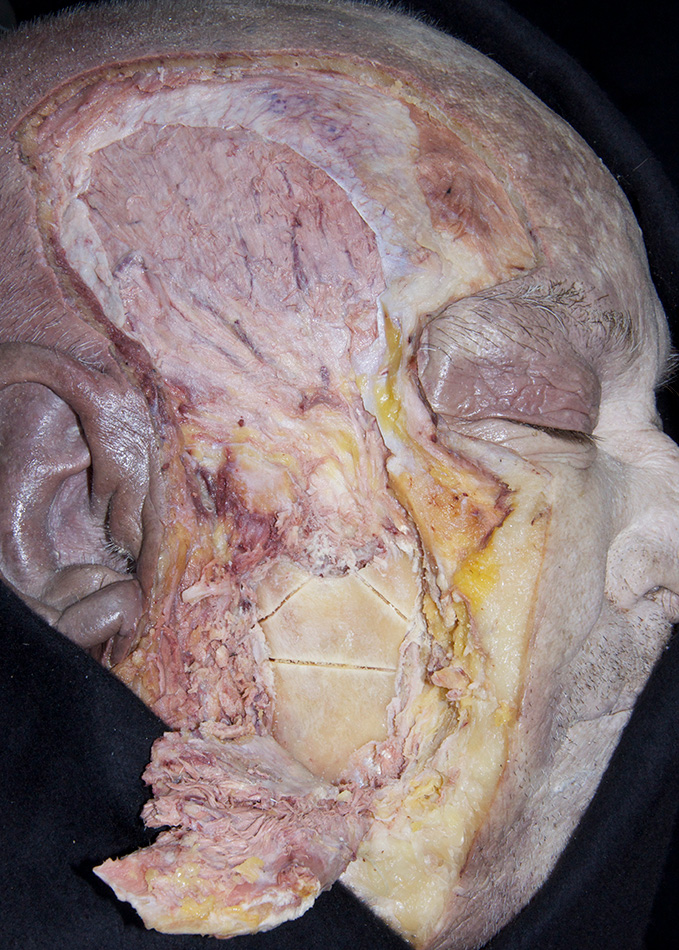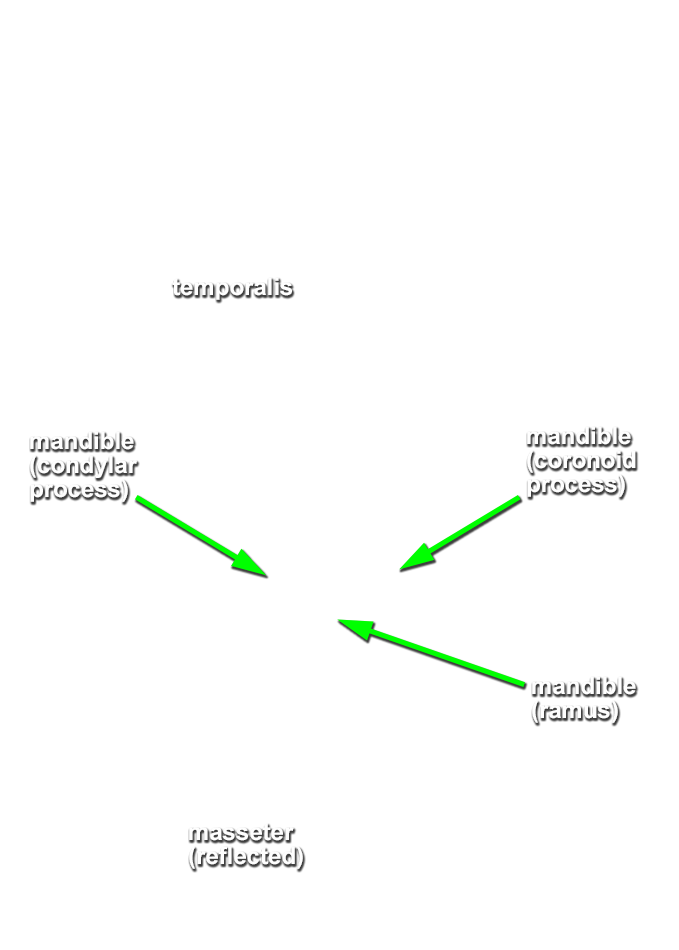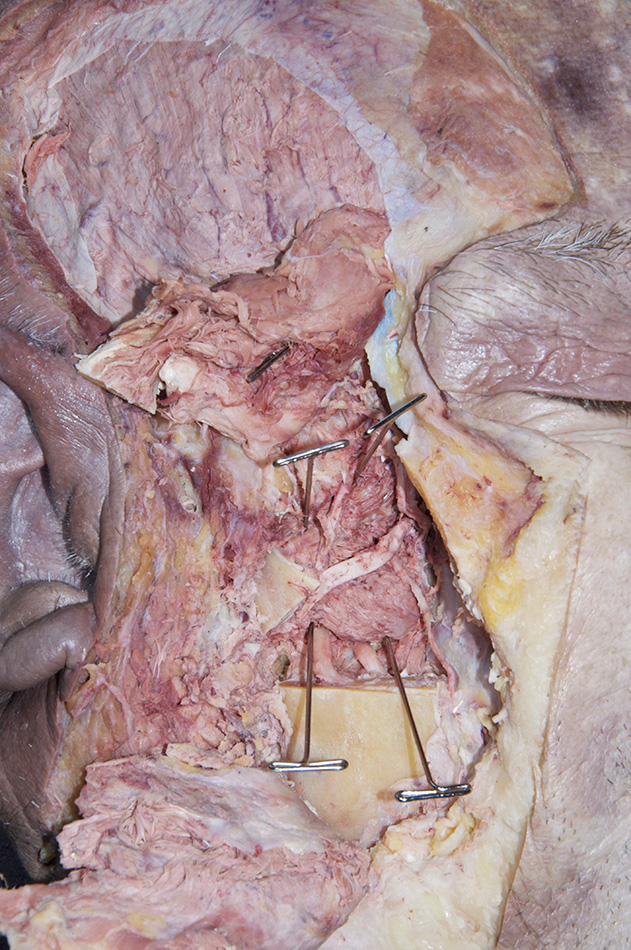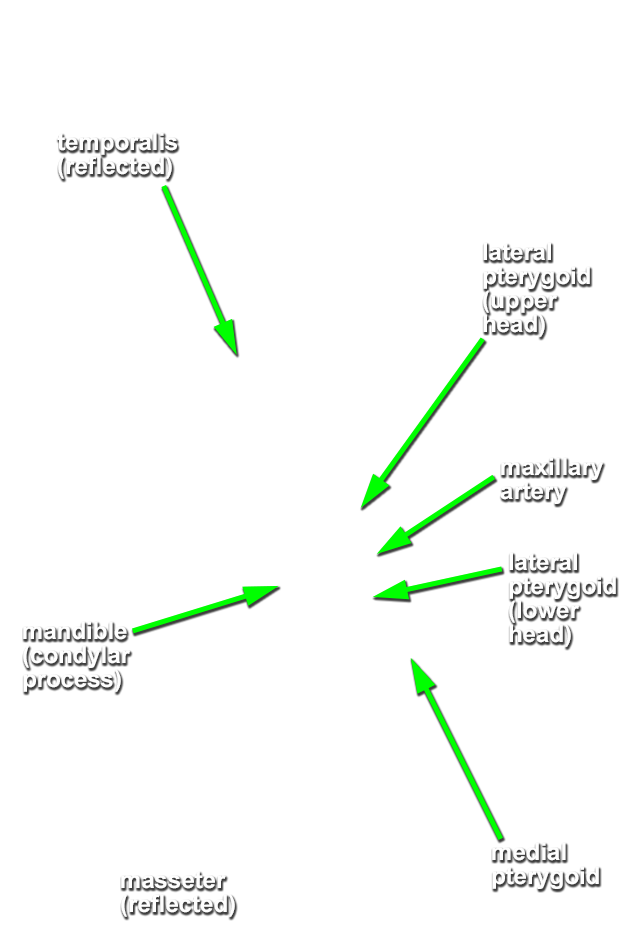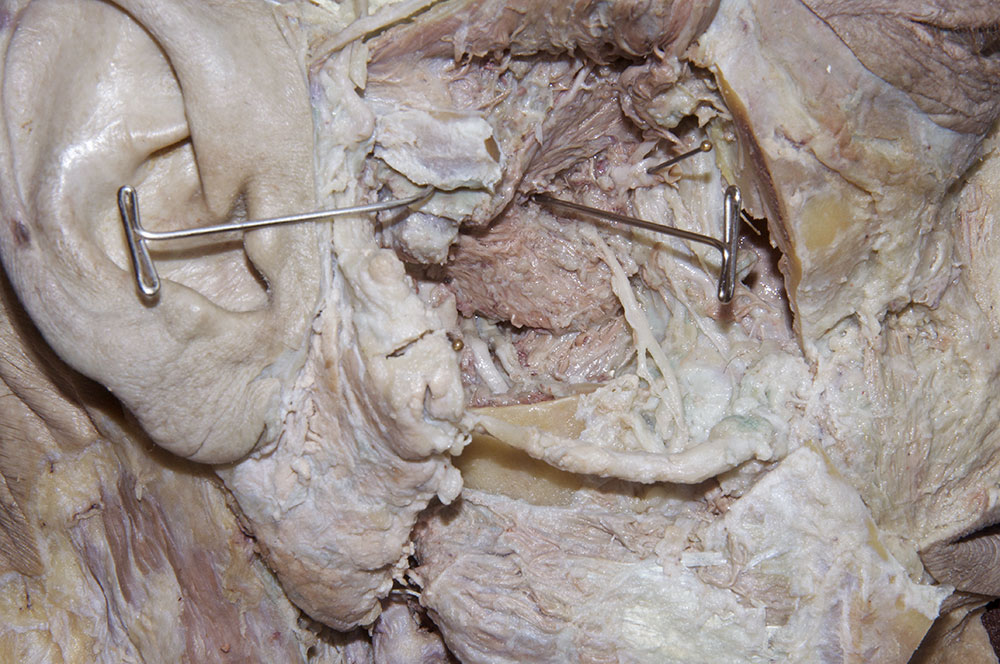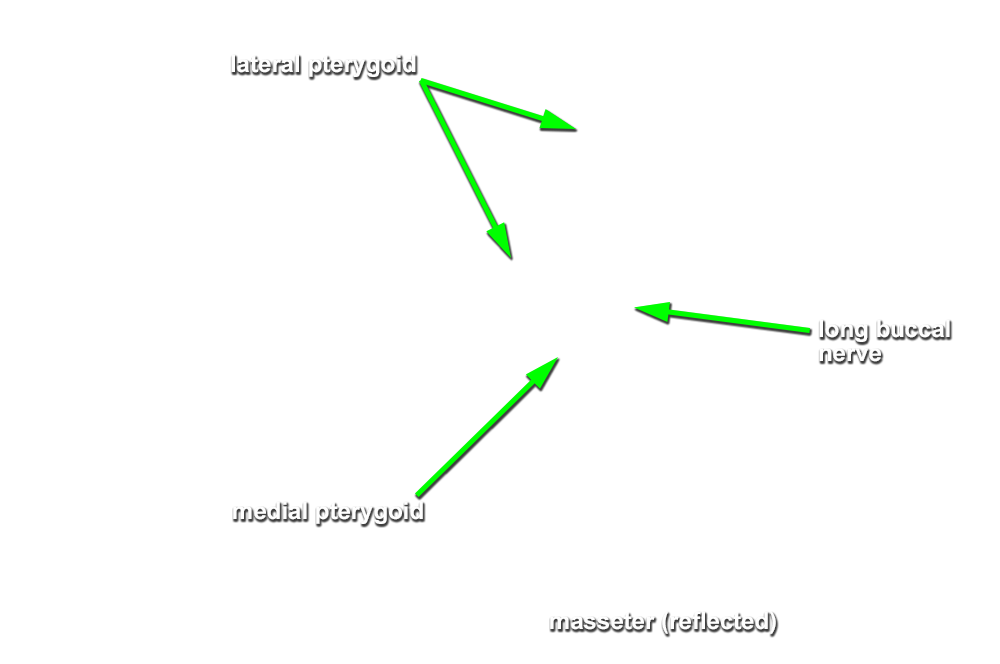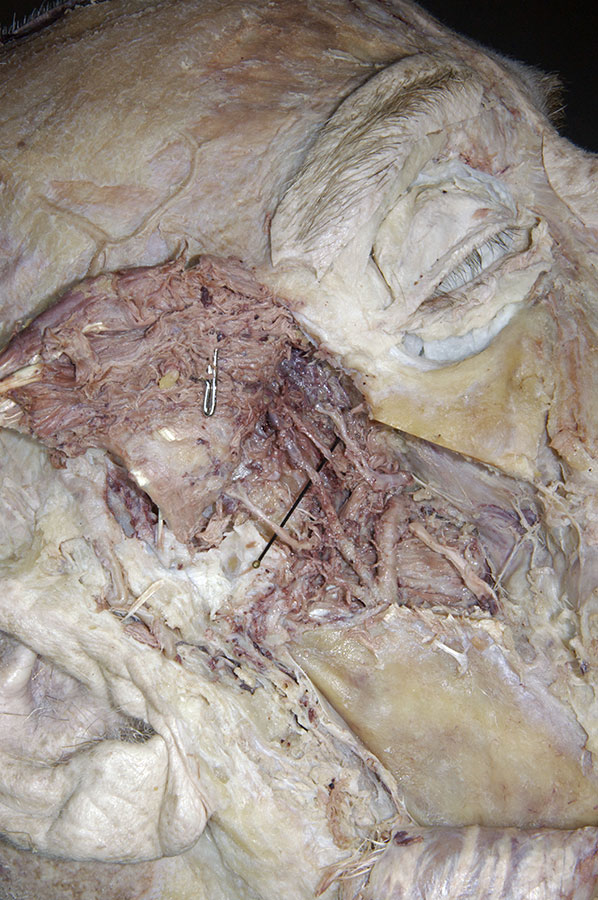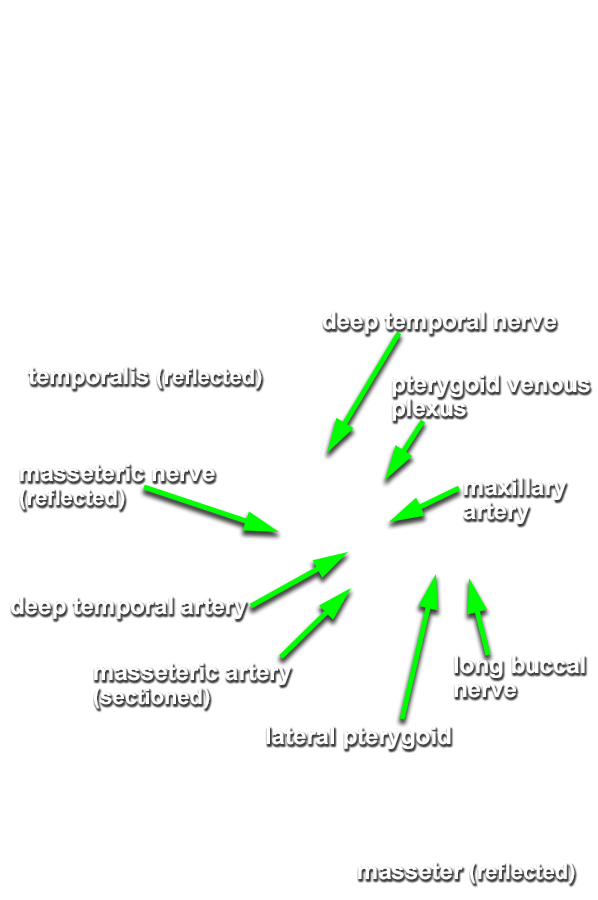Remove a portion of the ramus of the mandible to expose the pterygoid muscles.
- (ON THE RIGHT SIDE ONLY) The objective is to remove a portion of the mandible without damaging any of the underlying nerves or arteries, especially the inferior alveolar nerve and artery.
- (ON THE RIGHT SIDE ONLY) Blunt dissect around the inferior aspect of the neck of the mandible. Use the electirc saw to cut (cut 4) the neck of the mandible. Watch out for the auriculotemporal nerve (facial dissection).
- (ON THE RIGHT SIDE ONLY) Blunt dissect along the medial surface of the ramus of the mandible. Attempt to push all soft structures away from the mandible. Place a scalpel handle between the mandible and the soft structures immediately superior to the level of mandibular foramen.
- (ON THE RIGHT SIDE ONLY) Use the electric saw to make a transverse cut (cut 5) through the ramus of the mandible approximately 1 cm inferior to the inferior limit of the mandibular notch (the cut is at the level of the occlusal surface of the second lower molar). Blunt dissect and remove the free portion of the ramus of the mandible.
- (ON THE RIGHT SIDE ONLY) Identify and clean the lateral and medial pterygoid muscles. (G 7.50A;N 49;Gl 40.25) As you clean the muscles, watch out for the nerves and arteries of the infratemporal fossa.
Important Relationships
- The lateral pterygoid muscle is positioned superior to the medial pterygoid muscle and anterior to the head and neck of the mandible.
